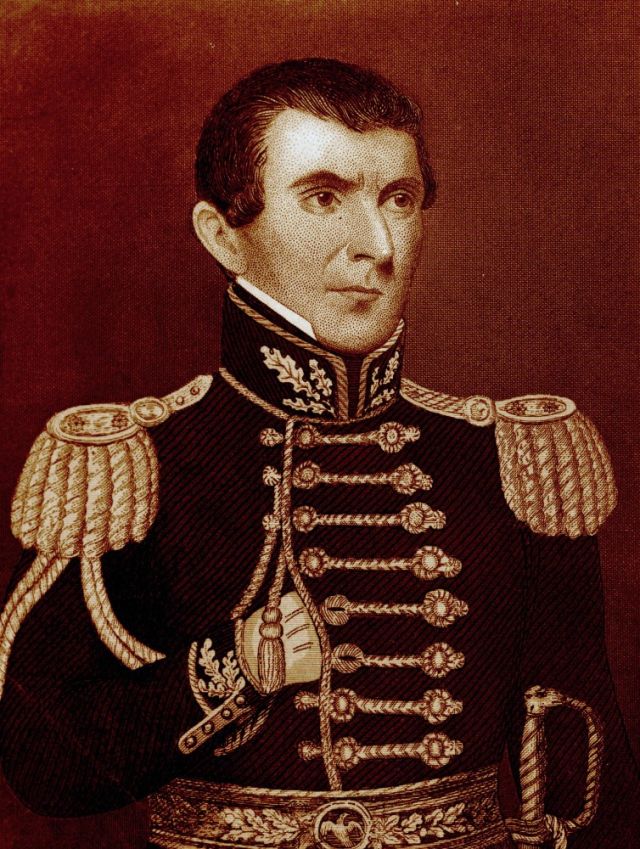John Cook Bennett
(1804-1867)


D&C 124:16-17
By Susan Easton Black
John was tutored in the practice of medicine by his uncle Dr. Samuel Hildreth, a physician in Marietta, Ohio. By the 1830s he held a professorship in midwifery, diseases of women and children, and medical jurisprudence at Willoughby University in Ohio. At the time, he was accused of selling medical degrees, peddling diplomas “to every ignoramus who could raise ten dollars to buy one.”1
Hoping to get away from his accusers, he moved on to Illinois. In 1840 John, a commissioned brigadier general in the second division of the Illinois militia, made the acquaintance of Church leaders and received an invitation to come to Nauvoo. John was welcomed into the city of the Saints. Following his baptism, Joseph Smith compared John C. Bennett to the Apostle Paul and said, “[Paul] was a good orator, but Doctor Bennett is a superior orator, and like Paul is active and diligent, always employing himself in doing good to his fellow men.”2
John made many contributions to the city of Nauvoo from 1840 to 1841. He helped draft and secure the charter for the City of Nauvoo. He was elected the first mayor of Nauvoo. In his February 1841 address as mayor elect, he said, “I trust that the confidence reposed in me, by my fellow citizens, has not been misplaced, and for the honor conferred they will accept my warmest sentiments of gratitude.”3 While serving as mayor, John was also appointed the first chancellor of the University of Nauvoo and a Quartermaster General and later Major General in the Nauvoo Legion.
It was not until March 1841 that word of his checkered reputation in the medical field and his illicit relationships with women reached the citizens of Nauvoo. His carefully worded denials stopped rumors. In April 1841 he was appointed an assistant to the Prophet Joseph Smith. But his loyalty to Joseph was not true. In a sham battle of the citizen/soldiers of the Nauvoo Legion, John tried to persuade Joseph Smith to take an unprotected position on the battlefield. The Spirit whispered to the Prophet Joseph that “mischief [was] concealed in that sham battle.”4 He refused the entreaties of John.
Eight days following the sham battle, a Church court proceeding was held to investigate John’s behavior in the Nauvoo Legion. The investigation revealed his past unscrupulous medical practices and the truth of his illicit relationships. In the wake of public indignation, John resigned as mayor and cried like a child before Church leaders, asking to be spared from punishment. John told Church leader William Law “that if he were exposed it would break his mother’s heart—that she was old, and if such things reached her ears it would bring her down with sorrow to the grave.”5 According to Aroet Hale, the Prophet Joseph told John, “If he did not repent of his sins and sin no more, the curse of God Almighty would rest upon him, that he would die a vagabond upon the face of the earth, without friends to bury him.”6 John was excommunicated for adultery on May 11, 1842, and shortly thereafter was cashiered from the Nauvoo Legion.
Rather than just go his way, John fought back. He publicly accused the Prophet Joseph Smith of committing adultery and planning the May 6, 1842, assassination of former Missouri governor Lilburn W. Boggs. He urged Missouri and Illinois government officials to renew the 1838 charge of treason against the Prophet Joseph. The accusations of John led directly to the arrest of Joseph Smith in June 1843.
John went on to speak against The Church of Jesus Christ of Latter-day Saints and the Prophet Joseph Smith in large populated cities throughout the United States. In November 1842 he authored and published The History of the Saints; or, An Expose of Joe Smith and Mormonism. The purpose of his publication was to “expose the enormous iniquities which have been perpetrated by one of the grossest and most infamous imposters,” meaning Joseph Smith.7 After the publication, the Prophet Joseph said of John:
I was his friend, I am yet his friend, as I feel myself bound to be a friend to all the sons of Adam. Whether they are just or unjust, they have a degree of my compassion and sympathy. If he is my enemy, it is his own fault, and the responsibility rests upon his own head; and instead of arraigning his character before you, suffice it to say that his own conduct, wherever he goes, will be sufficient to recommend him to an enlightened public, whether for a bad man or a good one.8
John never returned to the fellowship of the Saints. He briefly affiliated with apostate groups led by George Hinkle, Sidney Rigdon, and James J. Strang. But eventually he turned from religious movements to the practice of medicine. By 1856 John was practicing medicine in Polk City, Iowa. He died on August 5, 1867, in Polk City at age sixty-three.
1. Western Medical Reformer 5 (Cincinnati, 1845):13, as cited in Frederick C. Waite, “The First Medical Diploma Mill in the United States.” Bulletin of the History of Medicine 20 (Baltimore: 1946), 499.
2. Discourse, 5 January 1841, as Reported by William Clayton, 4. Joseph Smith Papers.
3. Smith, History of the Church, 4:288.
4. History, 1838–1856, volume C-1 [2 November 1838–31 July 1842], 1329. Joseph Smith Papers.
5. Smith, History of the Church, 5:76.
6. Aroet Lucious Hale Journal, typescript, 7. L. Tom Perry Special Collections, Harold B. Lee Library, Brigham Young University, Provo, UT.
7. John C. Bennett, The History of the Saints or, An Expose of Joe Smith and Mormonism (Boston: Leland and Whiting, 1842), preface.
8. Smith, History of the Church, 5:156.
Additional Resources
- Biography of John Cook Bennett (josephsmithpapers.org)
